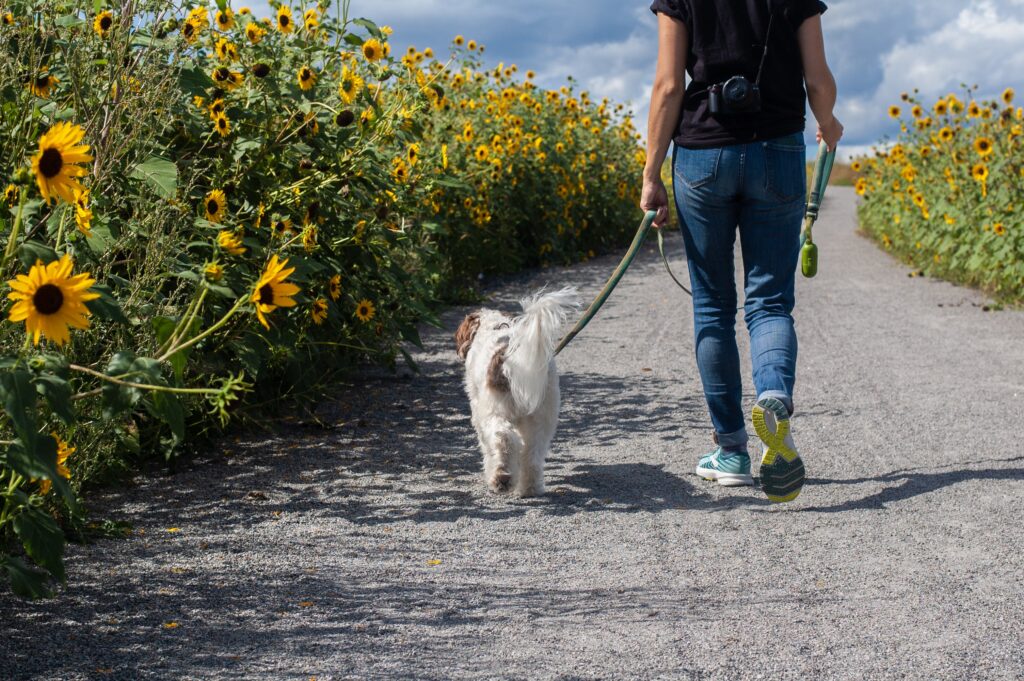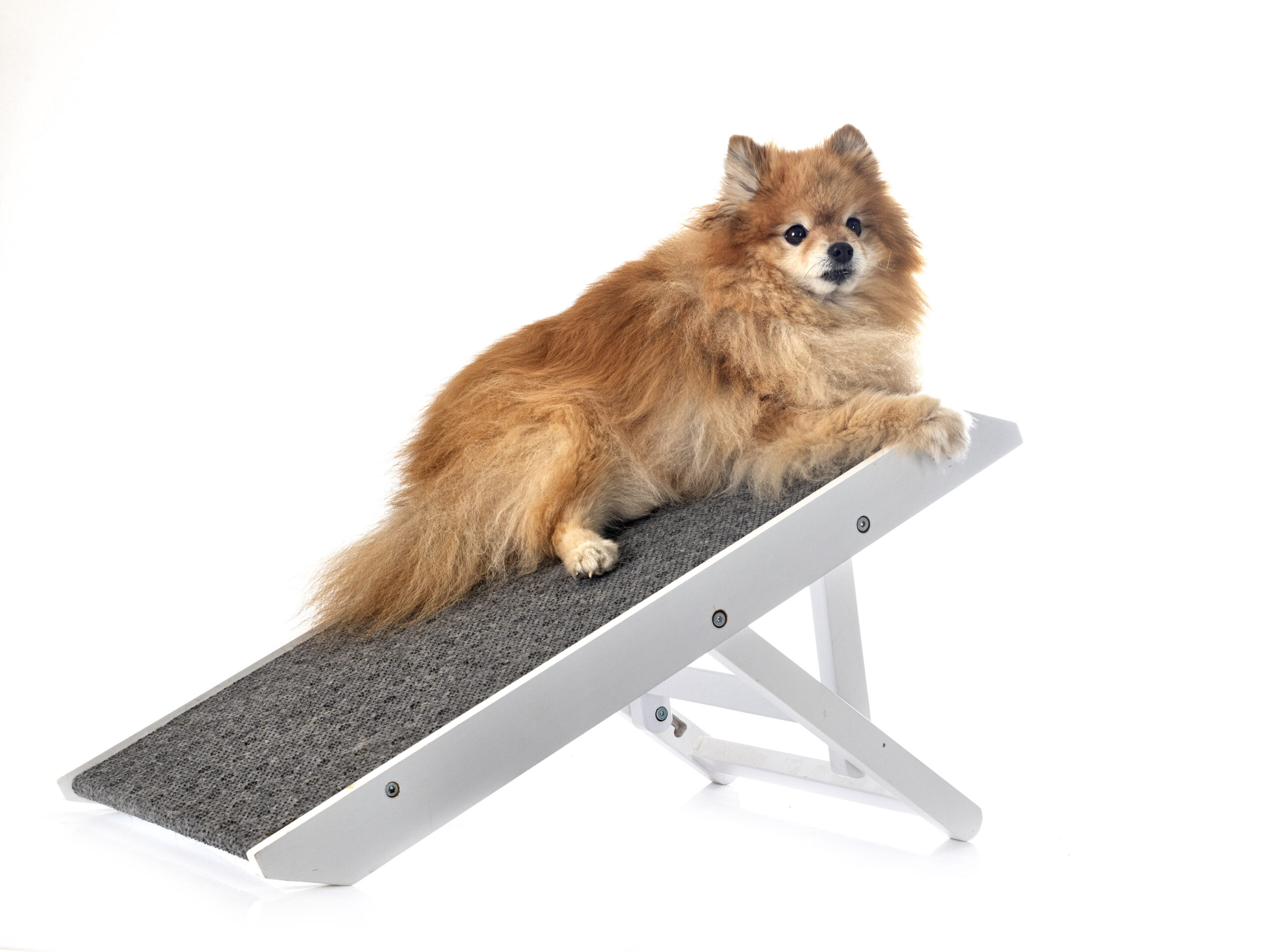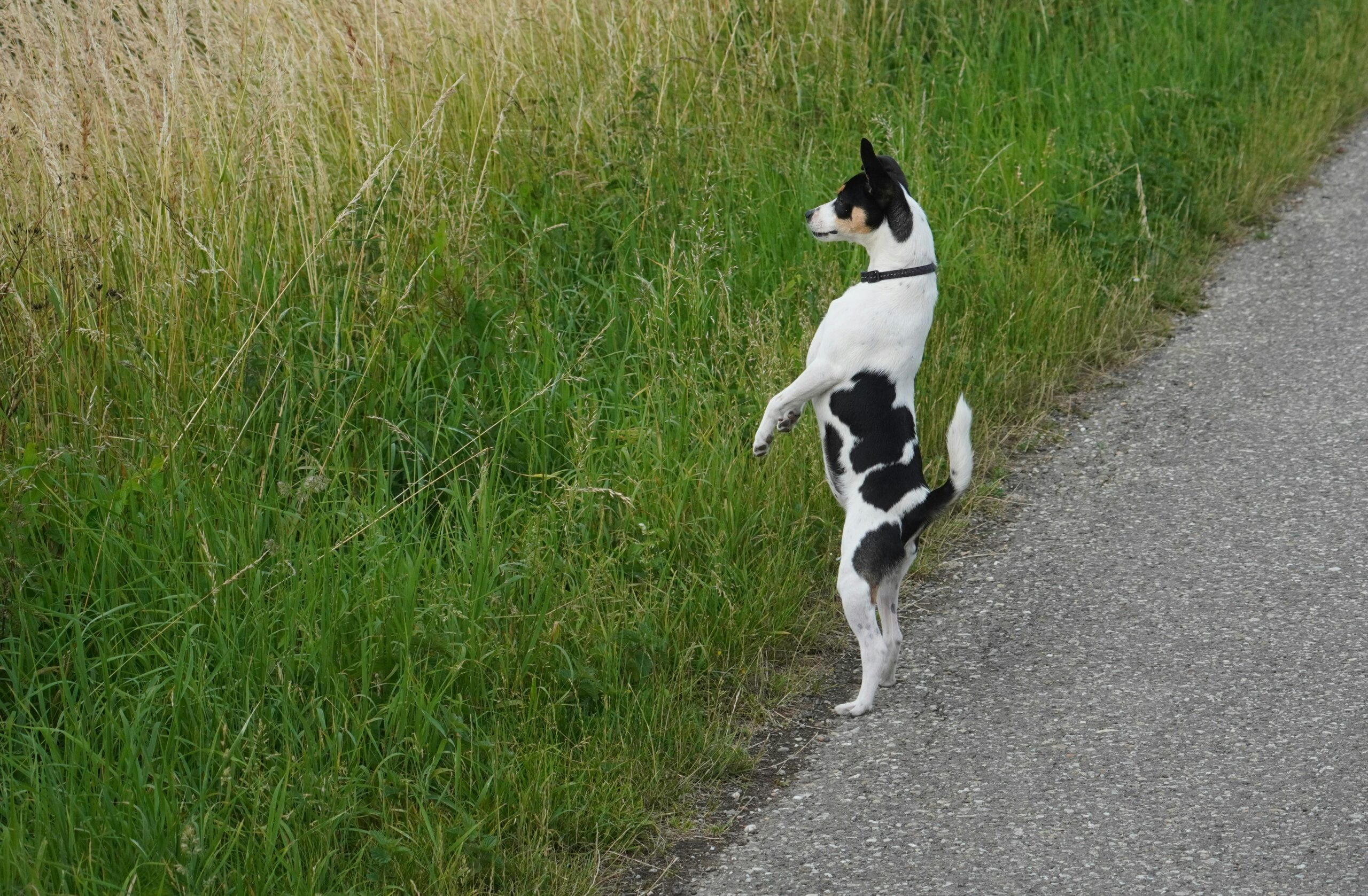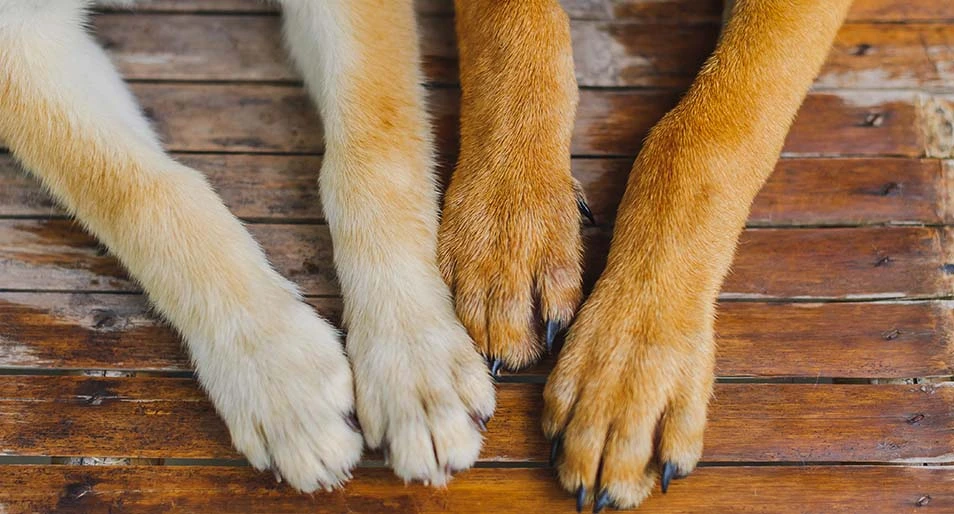As dogs age, it’s not uncommon for them to experience mobility issues, especially in their back legs. One of the most distressing symptoms for pet owners to witness is when their dog’s back legs begin to collapse, making it difficult or impossible for them to stand or walk. This article will explore the causes of hind end weakness in dogs, what you can do to help your furry friend, and when to seek veterinary care.
Causes of Hind End Weakness
Hind end weakness in dogs can have a variety of causes, ranging from degenerative conditions to injuries or illnesses. Some of the most common reasons for hind end weakness include:
Degenerative myelopathy (DM)
DM is a progressive neurological disease that affects dogs’ spinal cords and leads to paralysis. It typically first presents as weakness or wobbliness in the hind legs, and as the disease progresses, dogs lose the ability to stand or walk. As this is a genetic disorder, this can be detected through a DNA test from a saliva sample, but to be conclusive, your vet will suggest a histopathology of the spinal cord. It is not considered painful for your dog.
Arthritis
Arthritis is a common condition in older dogs that can cause pain and stiffness in the joints. When arthritis affects the hips or knees, it can lead to weakness and instability in the hind legs.
Intervertebral disc disease (IVDD)
IVDD occurs when the cushioning discs between the vertebrae in a dog’s spine rupture or herniate. This can put pressure on the spinal cord, leading to hind end weakness or even paralysis.
Hip Dysplasia
Hip dysplasia is a genetic condition that affects the hip joint. It occurs when the ball and socket of the joint do not fit together properly, leading to wear and tear on the joint and hind end weakness.
Other Causes
Other potential causes of hind end weakness in dogs include spinal cord injuries, nerve damage, and certain infectious diseases.
Treatments for Canine Back Leg Weakness
The treatment for back leg weakness in dogs will depend on the underlying cause of the condition. In some cases, such as degenerative myelopathy, there is no cure for the condition, and treatment will focus on managing symptoms and improving quality of life.
For other conditions, treatment options may include medications to reduce inflammation, surgery to repair herniated discs or correct hip dysplasia, acupuncture, or physical therapy (ie. swimming rehab, range of motion exercises) to improve muscle strength and mobility.
Caring for a Dog with Hind End Weakness: Tips for Owners
Caring for a dog with hind end weakness can be challenging, but there are several things you can do to make it easier.
Harnesses or slings
Help your dog up using a harness or homemade sling using a towel. This can help them stay steady, while protecting your back too, especially if you need to bend down. You can find harnesses that are made for front, back, mid, or full body support, depending on which area is weakest.
Doggie Wheelchairs
Wheelchairs allow handicapped dogs to live their lives relatively normally again – they can still go out with the family, sniff other dogs, and play.
However, while wheelchairs can work for just the hind legs, or replace all 4 legs, they wouldn’t be suitable for dogs who are so tired that they want to lie down all the time, since they wouldn’t be able to do so once they’re in their wheels.
Also, doggie wheels may mean less movement for your dog’s legs, when they may actually need more exercise to strengthen and maintain muscle mass.
Slip-proofing
As your dog’s back legs get weaker, you might notice them slipping on surfaces. There are several easy things or combinations of things you can do to lower their risk of slipping and falling. Check out our other article on Paw Grips and Other Slip Proofing Tips for ideas.
Orthopedic beds
If your dog was weak joints, it’s important to provide a comfortable, supportive bed, that isn’t too soft. Orthopedic dog beds often use memory foam, as the material is firm yet decreases pressure on the joints. Many dogs like having a bolster around the sides to rest their heads higher, or to to lean up against. Also look for one that has a removable cover for easy washing, and has a non-skid bottom, like this PetFusion Orthopedic Dog Bed.

Home improvements to give assisted access
Install ramps or stairs to help your dog get up and down from the couch and bed, eliminating the need to jump.

Medication
Depending on the underlying cause of the leg weakness, your veterinarian may prescribe some anti-inflammatory medicine and / or pain reduction medicine. These could take the form of daily pills like the NSAID Metacam (meloxicam) or Carprofen, or regular injections, such as Librela, an monoclonal antibody injection for osteoarthritis pain, or Adequan, a cartilage protecting medication, that are given every month. Many medications do have side effects, affecting the liver or kidneys, so your vet may have to look at your dog’s vitals first before deciding which to give them.

Natural Supplements
- CBD oil
- Turmeric and Black Pepper Paste – this can be made at home, or you can buy ready made Golden Paste to avoid staining your kitchen.
- Collagen
- Glucosamine
- Chondroitin
- Green Lipped Mussel
- Hyaluronic Acid
- MSM
- Fish oil
- Boswellia arnica
There are several products that combine many of the above, and have helped arthritic dogs, including YuMove, Cosequin and Riaflex Joint Plus.
Importance of Exercise for Dogs with Hind End Weakness
While it may seem counterintuitive, exercise is actually an important part of managing hind end weakness in dogs. Regular exercise can help improve muscle strength and mobility, which can in turn help your dog maintain their balance and prevent falls.
However, it is important to work with your veterinarian to develop an exercise plan that is appropriate for your dog’s condition. They may recommend low-impact exercises, such as swimming or gentle walks, and may advise against high-impact activities, such as running or jumping.
Hydrotherapy is a popular form of physical therapy for dogs with joint problems. The buoyancy of water helps to reduce the weight on the joints, making it easier for dogs to move and exercise without putting excessive stress on their joints. This can be particularly beneficial for dogs with arthritis, hip dysplasia, or other conditions that affect their mobility. Additionally, the resistance of the water can help to build strength in the muscles around the affected joints, improving overall mobility and reducing the risk of further injury. Hydrotherapy can also be a low-impact form of exercise, making it an excellent option for senior dogs or those with limited mobility who may not be able to tolerate other forms of exercise.
You can help your dog do range of motion exercises to maintain joint flexibility, improve circulation, and prevent muscle atrophy. These exercises involve gently moving a dog’s joints through their full range of motion, which can help to reduce stiffness and pain caused by their disability.
Regular range of motion exercises can also help to prevent joint contracture, which can occur when a joint becomes permanently fixed in one position. These exercises can be incorporated into a dog’s daily routine and can be done at home with minimal equipment, making them a convenient and cost-effective way to promote their overall well-being.

Can senior dogs with hind end weakness still enjoy a good quality of life?
Yes, senior dogs with hind end weakness or even paralysis can still enjoy a good quality of life with proper care and management.
Disclaimer: The above post contains affiliate links to products that have been deemed helpful by myself or others in the dog parenting community. As an Amazon Associate I earn from qualifying purchases resulting from these links, to help me support this blog.
The Ultimate Guide to Buying a Couch Ramp for Dogs
Is your senior dog struggling to climb onto the couch now that his back legs are weaker than before?…
Exercises for Elderly Dogs with Weak Back Legs
These exercises will help get your dog moving better by introducing the basics of joint movement, ba…
How to Trim Black Dog Nails on Senior Pups
It’s not easy to find the quick of your dog’s nails, especially when they’re black…

About the Author
Tina C
Founder of The WOOF Line, Tina cared for her rescue dogs Jen and Flapper to the ripe ages of 16 and 18, respectively. Dogged persistence led her to corners of the internet where fellow senior pet owners congregate, revealing troves of valuable experience and advice. Tina hopes that by gathering this information, pet parents will better understand the options available to them, and find solutions to thrive with their furry friends for years to come. Read our story here.




Leave a Reply